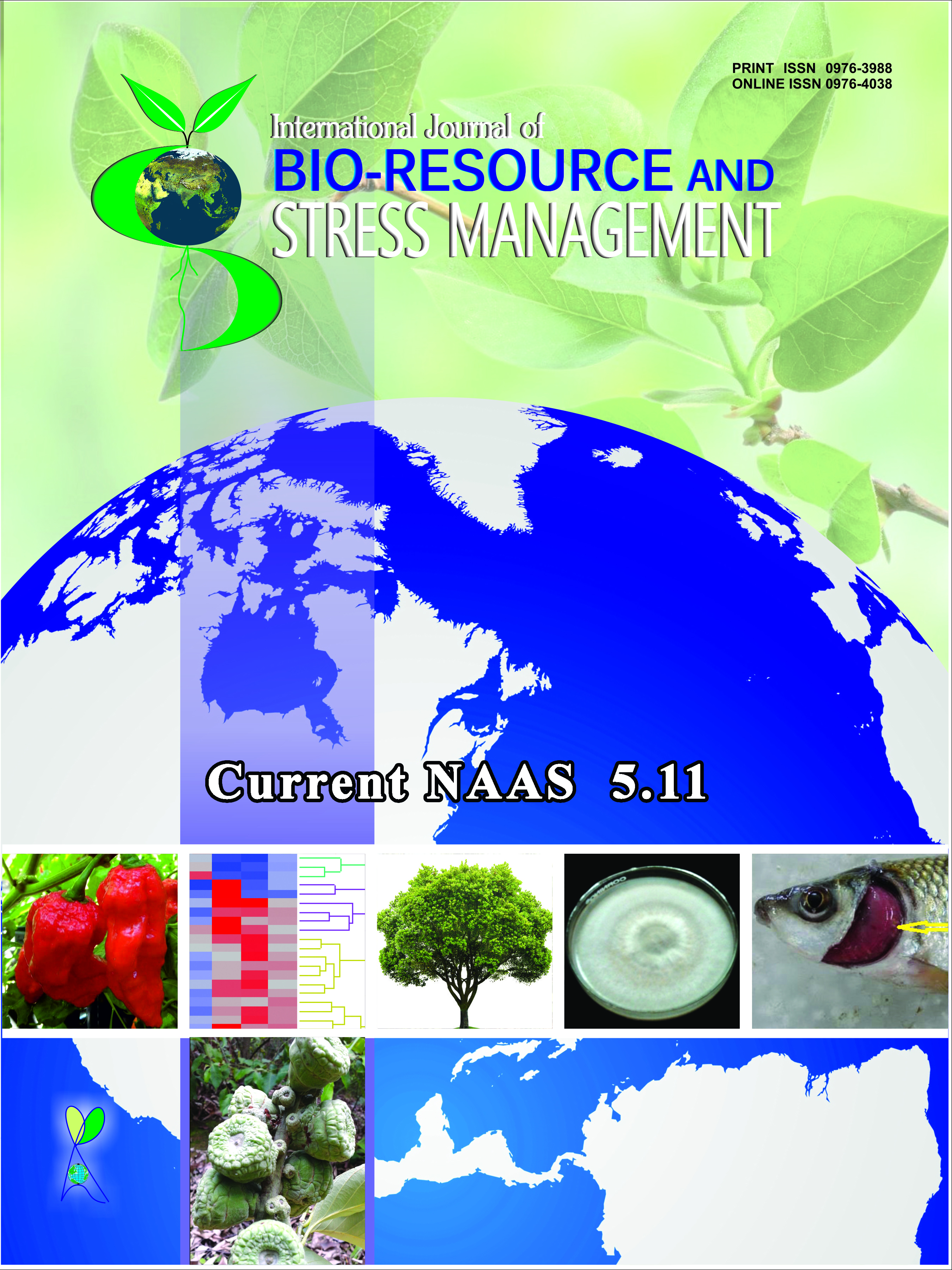Persistence of Fipronil and Bifenthrin Residues in Cabbage
Keywords:
Fipronil, bifenthrin, residues, cabbageAbstract
The experiment was conducted during kharif 2007 with cabbage variety Varun. Three sprays of fipronil @ 100 and bifenthrin @ 50 g a.i. ha-1 respectively were sprayed at head formation stage. The dissipation pattern of fipronil revealed that initial deposit of fipronil (1.69 mg kg-1) was dissipated to below detectable residues at 10 days after third spray. While, in case of bifenthrin, the initial deposit (1.03 mg kg-1) was dissipated below detectable level at 7 days after third spray. The maximum residue limit for fipronil and bifenthrin was found to be 0.2 and 0.1 mg kg-1, respectively. The waiting period for safe harvest of cabbage heads after three sprays of fipronil and bifenthrin @ 100 and 50 g a.i. ha-1 at head formation stage was 5.19 and 5.16 days, respectively. The half life values for fipronil and bifenthrin was 3.13 and 3.38 days, respectively.
Downloads
Downloads
Published
How to Cite
Issue
Section
License
Authors retain copyright. Articles published are made available as open access articles, distributed under the terms of the Creative Commons Attribution-NonCommercial-ShareAlike 4.0 International License, which permits unrestricted non-commercial use, distribution, and reproduction in any medium, provided the original author and source are credited. 
This journal permits and encourages authors to share their submitted versions (preprints), accepted versions (postprints) and/or published versions (publisher versions) freely under the CC BY-NC-SA 4.0 license while providing bibliographic details that credit, if applicable.





